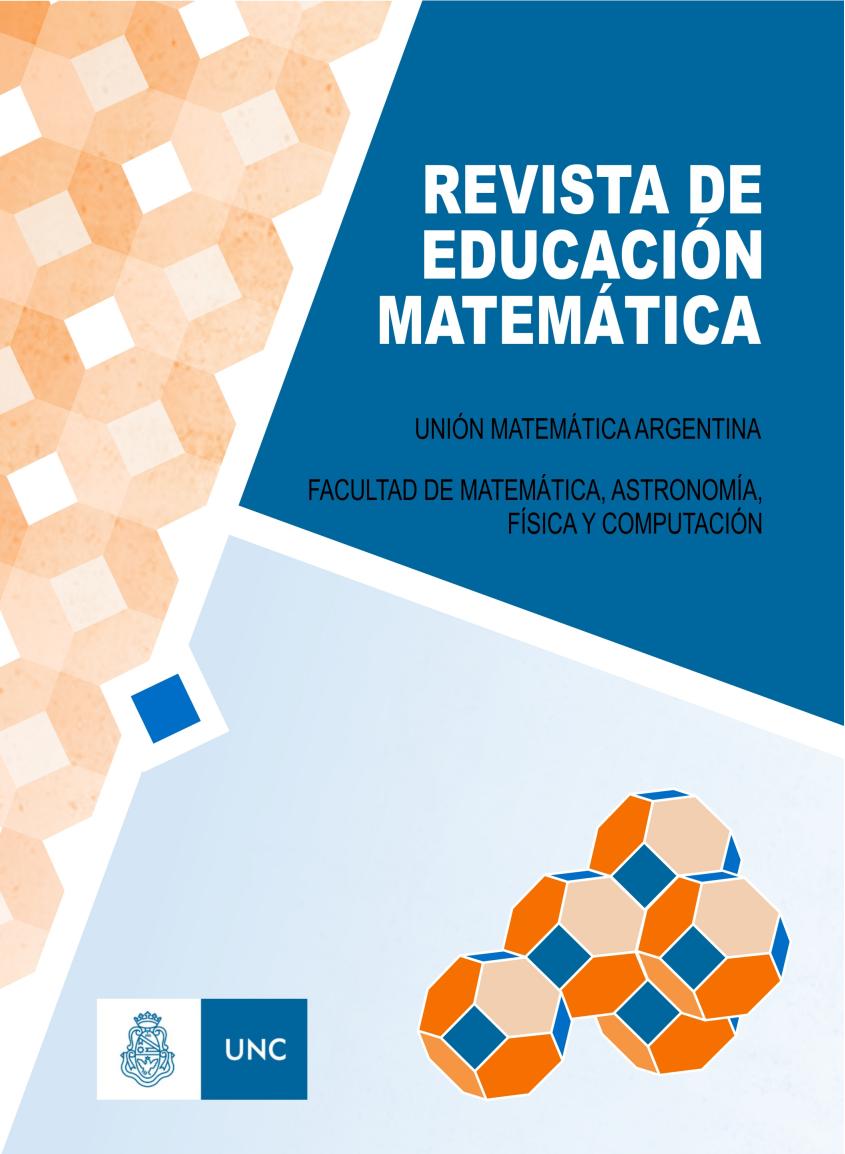Considerations on the definition of the n-th root and its connection to the construction of new concepts
DOI:
https://doi.org/10.33044/revem.28234Keywords:
Mathematics Education, Secondary School, nth RootAbstract
One of the main problems in mathematics education nowadays is the lack of motivation in students to learn the discipline. The causes of this phenomenon are diverse and deserve a deep treatment, but this work addresses a particular aspect of mathematical teaching that can be one of them. Precisely, we will present some contradictions, errors and inaccuracies that appear in schoolar books in the teaching of $n$th root at secondary school. We will show how they generate a construction of Mathematics as an inconsistent discipline, which may lead to didactic and epistemological obstacles. In this sense, teacher's work is essential to eradicate possible errors, from the continuous questioning and debate of the bibliographic material, and from the precision and consistency in the presentation of the concepts.
Downloads
References
Bidart Gauna, G., Cabral, G., Cafure, A., Cambriglia, V., y Fuentes, C. (2017). Algunas reflexiones sobre la racionalización. ́Rev. Educ. Mat, 32(1), 9–21.
Carena, M. (2019). Manual de matematica preuniversitaria ́ . Ediciones UNL, Santa Fe.
Covelo, L., y Covelo, M. E. (2019). Matemática 2. Maipue, Buenos Aires.
Covelo, L., y Covelo, M. E. (2020). Matemática 3. Maipue, Buenos Aires.
De Simone, I., y Turner, M. (2016). Matematica, funciones y estadísticas. A-Z editora, Buenos Aires.
Ferraris, L., y Tasso, M. (2008). Aprendamos matemática 8. ComunicArte, Córdoba.
Kaczor, P., Schaposchnik, R., Franco, E., Cicala, R., y D ́ıaz, B. (1999). Matemática 1. Ed. Santillana, Buenos Aires.
Larson, R., y Falvo, D. (2012). Precalculo, octava edición. CENGAGE Learning, México.
Noriega, R. (1979). El número real . Ed. Docencia, Buenos Aires.
Pacetti, A., y Bonardi, C. (2016). Matemática 3. El semaforo, Córdoba.
Sobel, M., y Lerner, N. (1996). Álgebra. Pearson - Prentice Hall.
Downloads
Published
Issue
Section
License
Copyright (c) 2020 Fernando Benitez, Marilina Carena

This work is licensed under a Creative Commons Attribution-ShareAlike 4.0 International License.
Aquellos autores/as que tengan publicaciones con esta revista, aceptan los términos siguientes:
- Los autores/as conservarán sus derechos de autor y garantizarán a la revista el derecho de primera publicación de su obra, el cuál estará simultáneamente sujeto a la Atribución-CompartirIgual 4.0 Internacional (CC BY-SA 4.0), que permite:
- Compartir — copiar y redistribuir el material en cualquier medio o formato
- Adaptar — remezclar, transformar y construir a partir del material
- La licenciante no puede revocar estas libertades en tanto usted siga los términos de la licencia
- Los autores/as podrán adoptar otros acuerdos de licencia no exclusiva de distribución de la versión de la obra publicada (p. ej.: depositarla en un archivo telemático institucional o publicarla en un volumen monográfico) siempre que se indique la publicación inicial en esta revista.
- Se permite y recomienda a los autores/as difundir su obra a través de Internet (p. ej.: en archivos telemáticos institucionales o en su página web) después del proceso de publicación, lo cual puede producir intercambios interesantes y aumentar las citas de la obra publicada. (Véase El efecto del acceso abierto).









